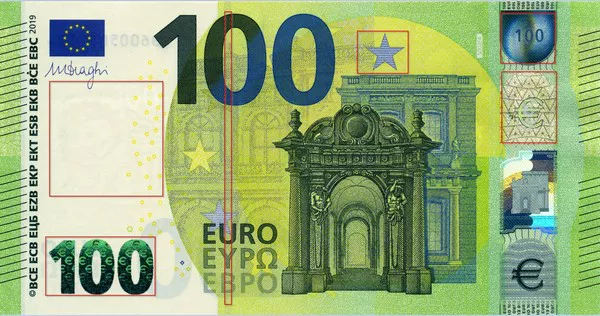In the realm of European currencies, the 50 Euro Cent coin holds a significant place, both in terms of its economic value and cultural symbolism. As a vital component of the Euro currency, the 50 Euro Cent coin transcends national borders, reflecting the harmonious collaboration of European nations in the economic sphere. In this article, we will explore the history, design, and significance of the 50 Euro Cent coin, shedding light on the diverse cultures and nations it represents.
Historical Background:
The Euro, officially introduced in 1999, emerged as a testament to the European Union’s commitment to economic integration. The Eurozone, consisting of 19 of the 27 European Union member states, adopted the Euro as their official currency, ushering in a new era of monetary cooperation. The 50 Euro Cent coin, a denomination introduced with the Euro currency, became an integral part of everyday transactions, bridging the financial gaps among diverse nations.
Design and Features:
The 50 Euro Cent coin, like other Euro coins, boasts a distinctive design that reflects the rich cultural heritage of Europe. Measuring 24.25 mm in diameter and weighing 7.8 grams, the coin holds a unique combination of materials – a center composed of Nordic gold and an outer ring made of copper-nickel. The obverse side of the coin features a common design across all Euro coins – a map of Europe, highlighting the geographical unity of the continent.
On the reverse side, each country in the Eurozone has the liberty to imprint its own design, creating a tapestry of diverse cultural expressions. The 50 Euro Cent coin thus becomes a canvas for member states to showcase their heritage. From iconic landmarks to national symbols, the reverse side of the coin serves as a miniature gallery, offering a glimpse into the cultural mosaic that is Europe.
Country-Specific Designs:
One of the fascinating aspects of the 50 Euro Cent coin lies in its country-specific designs. Each nation in the Eurozone seizes the opportunity to infuse its coin with elements that encapsulate its identity. For example, in Germany, the 50 Euro Cent coin features the Brandenburg Gate, an iconic structure symbolizing unity and freedom. Meanwhile, in France, the coin showcases Marianne, a symbol of the French Republic, embodying liberty and reason.
Similarly, other member states imbue their 50 Euro Cent coins with representations that range from historical figures to natural landmarks. The diversity in designs not only adds aesthetic appeal but also fosters a sense of pride and cultural unity among citizens of the Eurozone.
Economic Significance:
Beyond its artistic and cultural value, the 50 Euro Cent coin plays a crucial role in the economic landscape of the Eurozone. As a denomination commonly used for everyday transactions, this coin facilitates commerce and trade within and across member states. Its widespread circulation ensures that it becomes a familiar sight in the pockets and purses of millions, reinforcing the idea of a shared economic space.
Moreover, the 50 Euro Cent coin aligns with the broader monetary policy objectives of the European Central Bank (ECB). With a focus on price stability and economic growth, the Euro currency, including its coins, contributes to the overall economic well-being of the Eurozone. The 50 Euro Cent coin, as a medium of exchange, embodies the principles of a unified monetary system, fostering economic cohesion among member states.
Cultural Unity and Integration:
The 50 Euro Cent coin stands as a tangible symbol of the European Union’s commitment to cultural unity and integration. By allowing member states to imprint their unique designs on the reverse side, the coin encapsulates the spirit of cooperation and diversity within the Eurozone. Citizens across Europe experience a sense of connection as they handle coins adorned with images from different nations, fostering a shared identity that transcends borders.
The Euro currency, including the 50 Euro Cent coin, has played a crucial role in creating a more integrated Europe. As individuals travel, work, and engage in cross-border activities, the shared use of the Euro fosters a sense of belonging and interconnectedness. The 50 Euro Cent coin, in particular, becomes a tangible representation of this shared European identity, reinforcing the bonds that tie nations together.
See Also: Why Is The Euro Losing Value?All You Need To Know
Collectibility and Numismatic Interest:
Beyond its utilitarian role, the 50 Euro Cent coin has also captured the interest of numismatists and collectors. The diverse designs and limited mintages of certain issues make these coins sought after by enthusiasts. Collectors often appreciate the historical and cultural significance embedded in each country’s design, turning the 50 Euro Cent coin into a miniature work of art with intrinsic and monetary value.
Conclusion:
In conclusion, the 50 Euro Cent coin serves as a fascinating intersection of art, culture, and economics within the Eurozone. From its humble beginnings as a medium of exchange to its role in fostering cultural unity, this coin embodies the principles of a united Europe. As the Euro currency continues to evolve, the 50 Euro Cent coin stands as a testament to the shared aspirations and achievements of European nations. Whether in the hands of a casual user, a collector, or an economist, this coin tells a story that extends far beyond its monetary value.


